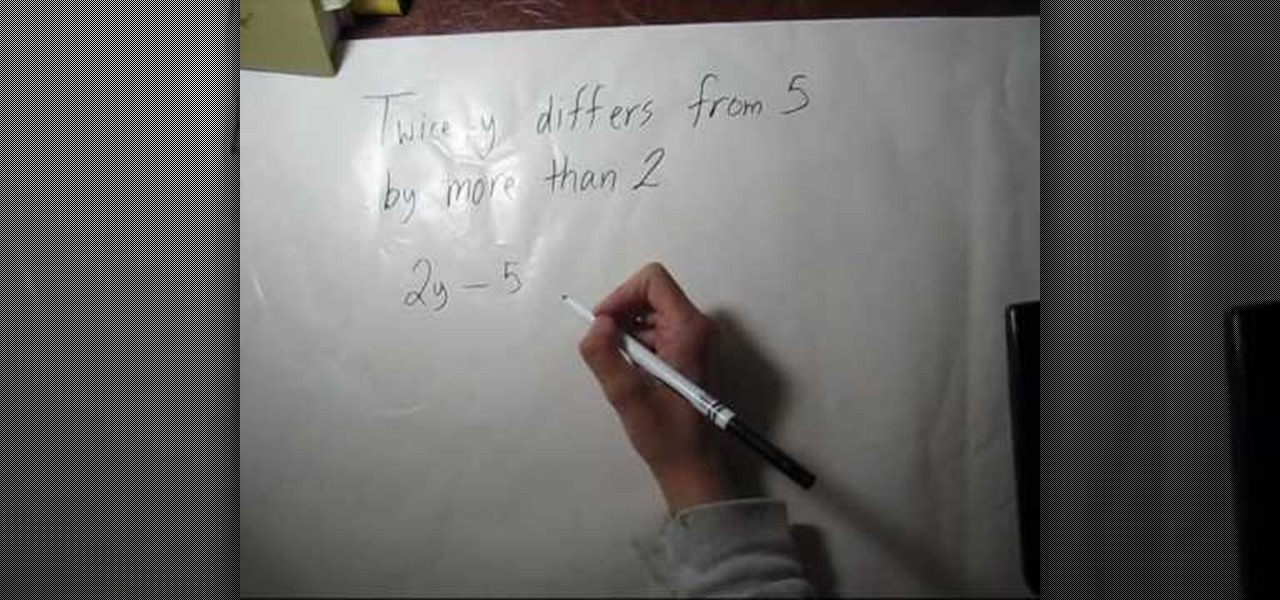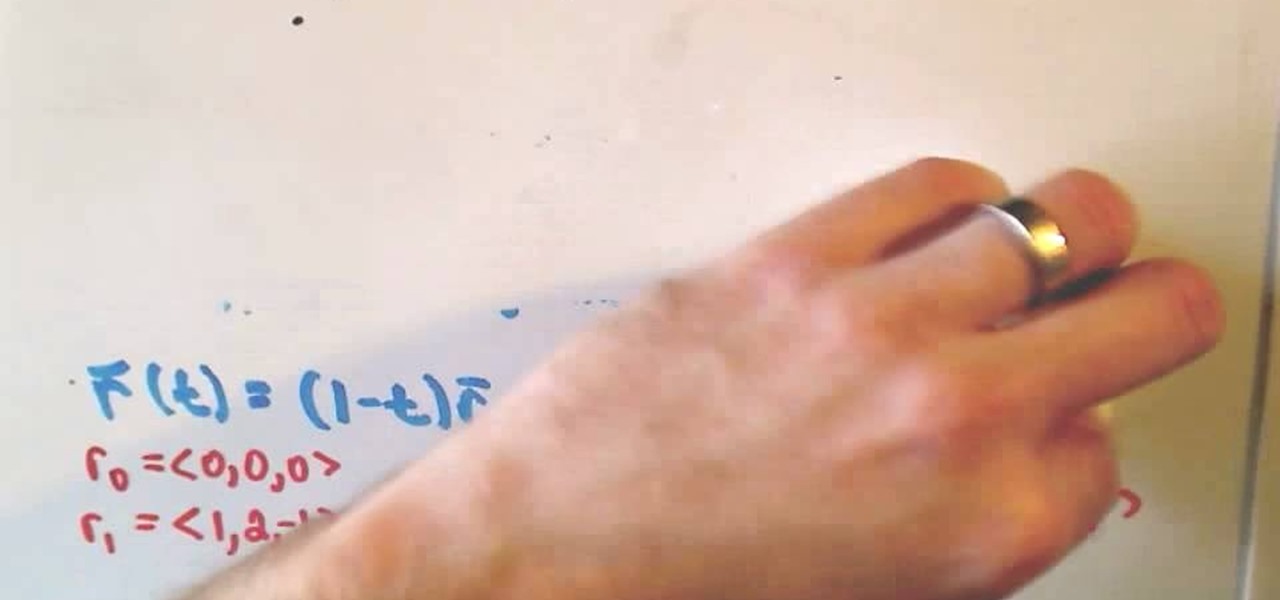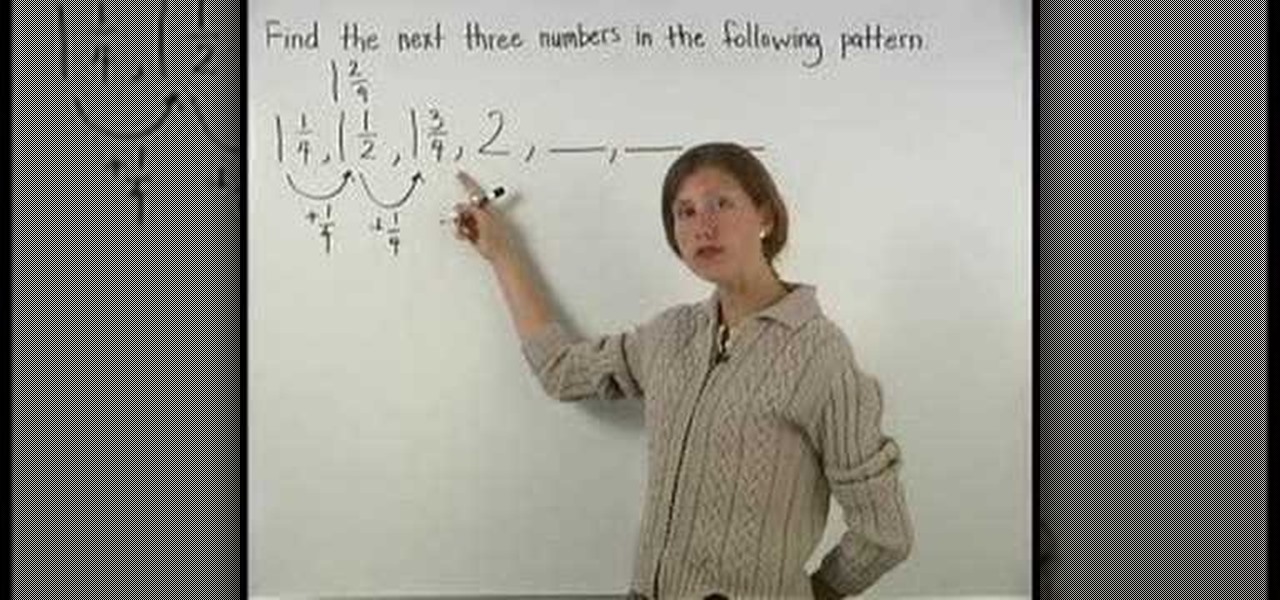Everything Else

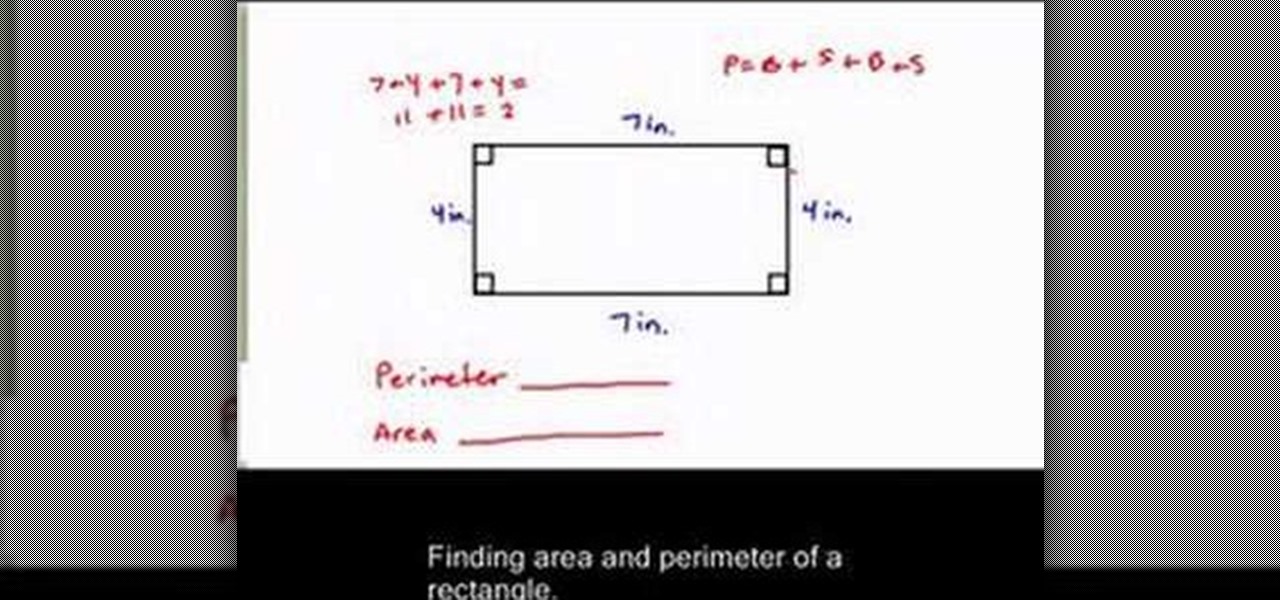
How To: Find the perimeter & area of a rectangle
This video starts out with a basic view of a rectangle and its dimensions. The base is 7 inches while the sides are 4 inches. It then displays the formula for finding the perimeter of the rectangle which is the addition of both bases and both sides. After the substitution of the values into the formula you can quickly come up with the perimeter. Then moving on the area, the formula is the base multiplied by the side. In this case, the base being 7 inches and the side being 4 inches you come o...
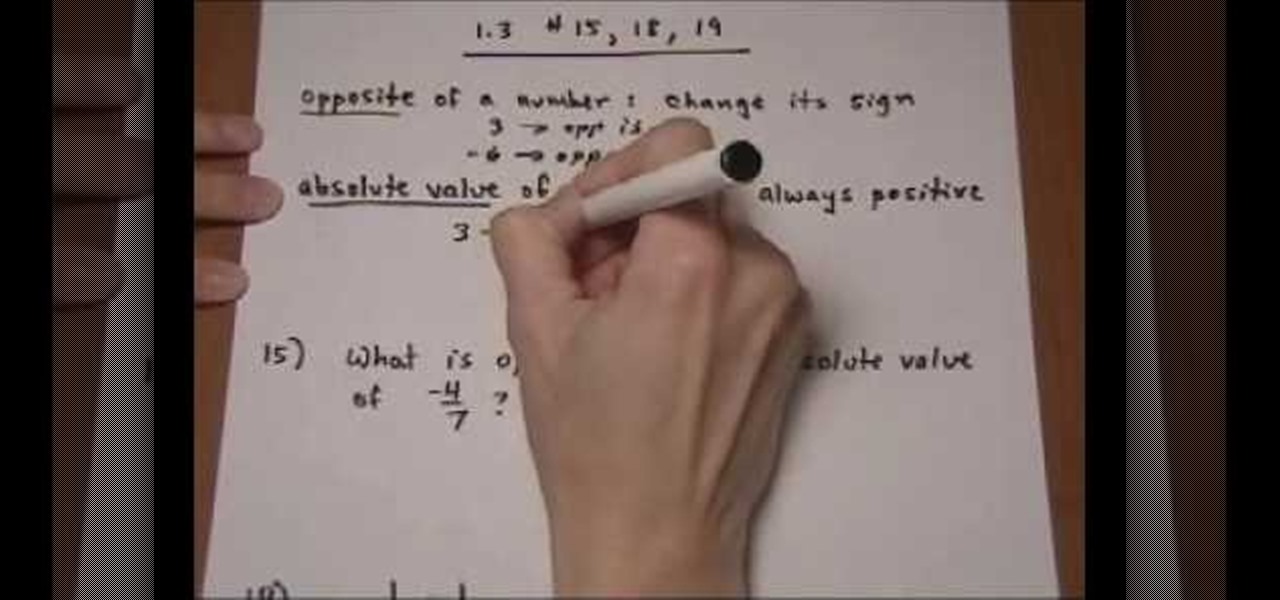
How To: Find the opposite and absolute value of a number
View the absolute value of a number as its distance from zero. When you take the absolute value of a number, you always end up with a positive number (or zero). Whether the input was positive or negative (or zero), the output is always positive (or zero). For instance, | 3 | = 3, and | _3 | = 3 also. This property that both the positive and the negative become positive makes solving absolute-value equations a little tricky. But once you learn the "trick", they're not so bad. Let's start with ...
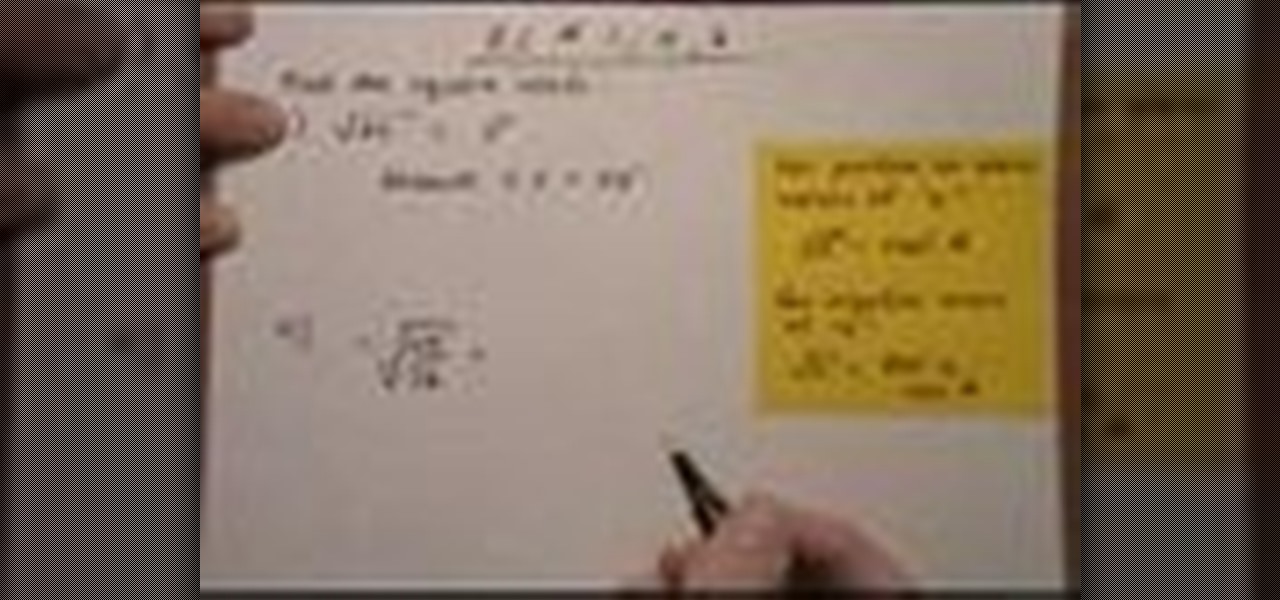
How To: Evaluate square roots
This is the video about how to evaluate square roots. The square root of a number is a number that you can square to get it, that is, a number that you can multiply by itself to get the number. So, 2 is a square root of 4, because 2 x 2 = 4, and 3 is a square root of 9, because 3 x 2 = 9. (-2) x 2 is also 4 and (-3) x 2 is also 9. Numbers that have square roots always have two, a positive one and a negative one, but the square root symbol means only the positive one, so we can have one answer...

How To: Complete Fahrenheit to Celsius conversion
This video shows you how to convert temperatures from Fahrenheit(F) to Celsius(C). In the video, the example of 75 degrees F is used. The formula for converting Fahrenheit to Celsius is given by temperature in Celsius= (temperature in Fahrenheit- 32)/1.8. So for 75 degrees F we take 75 in place of temperature in Fahrenheit. Therefore the equation becomes (75-32)/1.8=C . Further 43/1.8=c and finally C= 24. Hence 75 degrees Fahrenheit= 24 degrees Celsius . This conversion is used as Celsius is ...
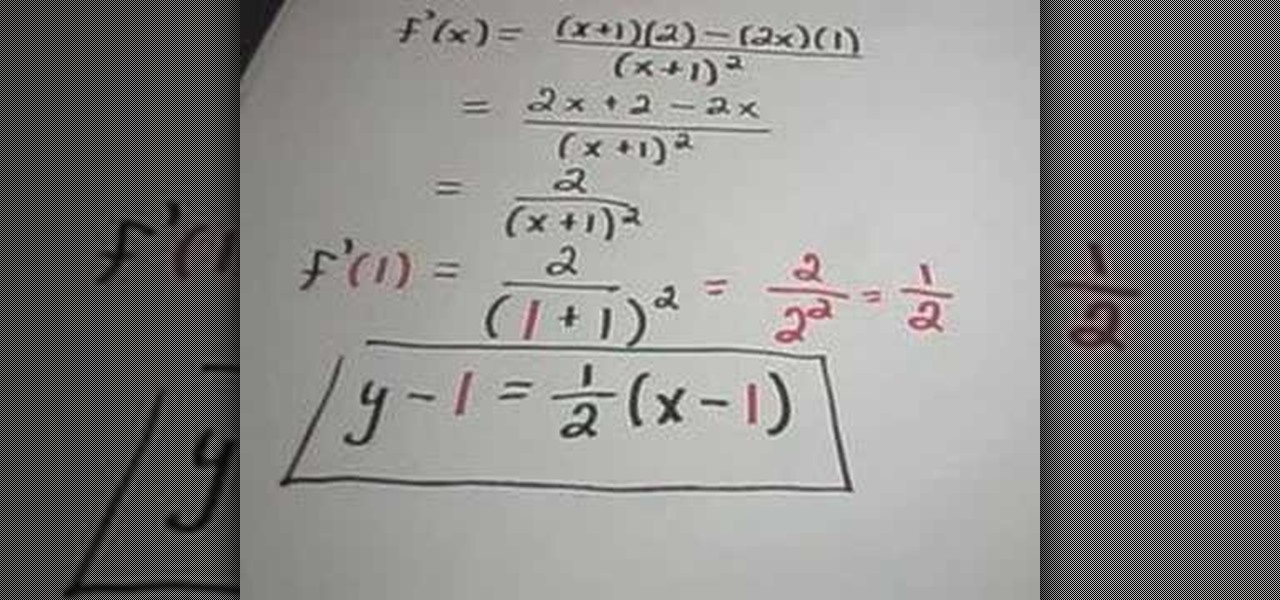
How To: Find the equation of a tangent line
This is the video about how to find the equation of a tangent line. As you may recall, a line which is tangent to a curve at a point a, must have the same slope as the curve. Therefore, the slope of the tangent is m = lim f(a + h) - f(a) h-->0 h Since the slope equation of the tangent line is exactly the same as the derivative definition, an easier way to find the tangent line is to differentiate using the rules on the function f. For example, Find the slope of a line tangent to the function ...
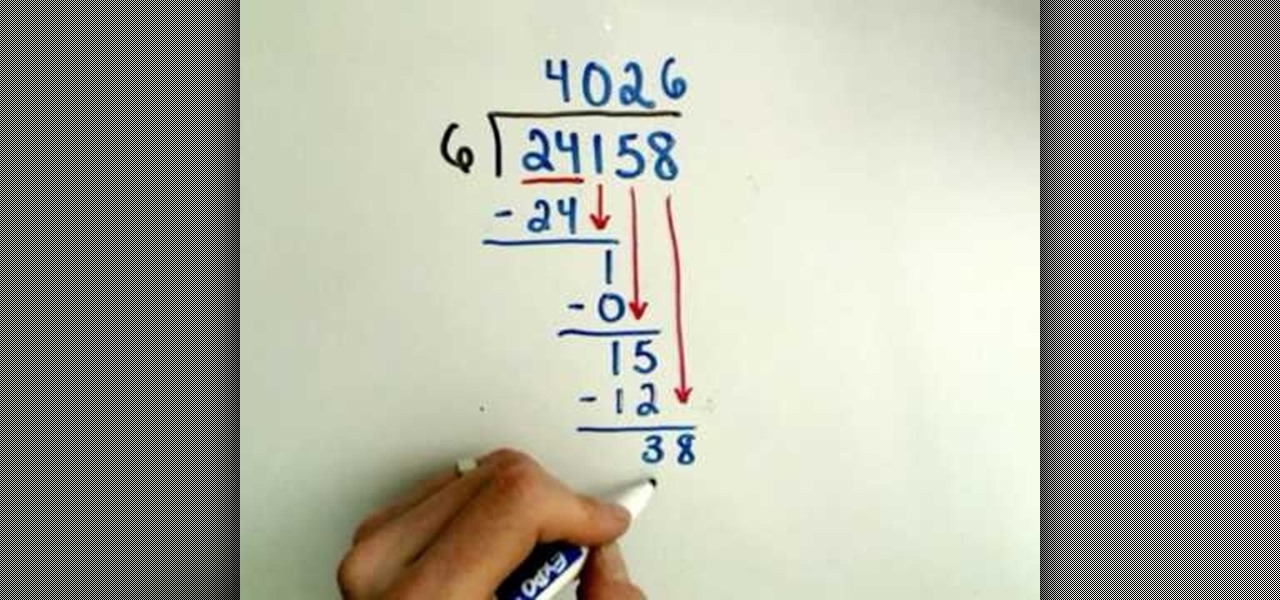
How To: Understand arithmetic basics to do long division
This video shows us how to understand the basic arithmetic for doing long division. Whenever you are about to perform the division operation, the number which is to be divided is called as the dividend and the number which divides the dividend is called as divisor. So while performing a very long division, usually the dividend is put under a bar and the divisor is put upfront. So while dividing the dividend, the divisor is made to check whether it can divide the numbers involved in the divide...
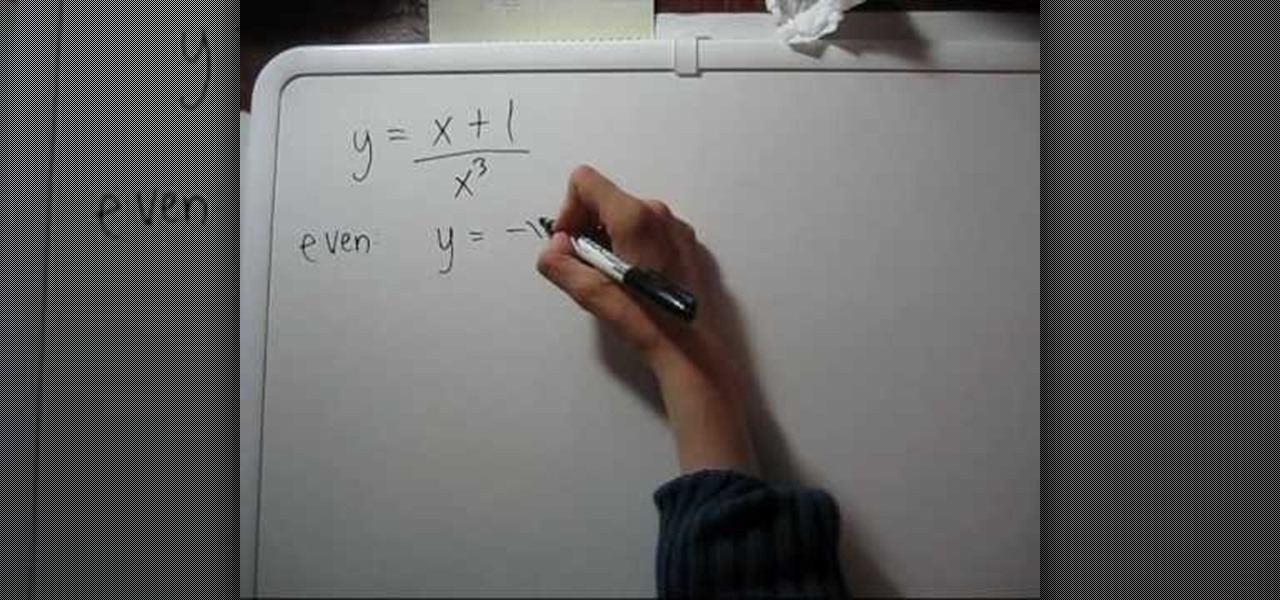
How To: Test for symmetry algebraically
This video teaches you how to test for symmetry algebraically. You will need to know the basic formats of graphs and the (x,y) setup. Once you get your equation of the line, you will need to replace y with negative y and x with negative x and solve the equation. You will need to solve for x and also for y for the odd and even. If the equations do not equal each other then they are not even or they are not odd. If this is the case then the lines are not symmetrical and that is how you test for...
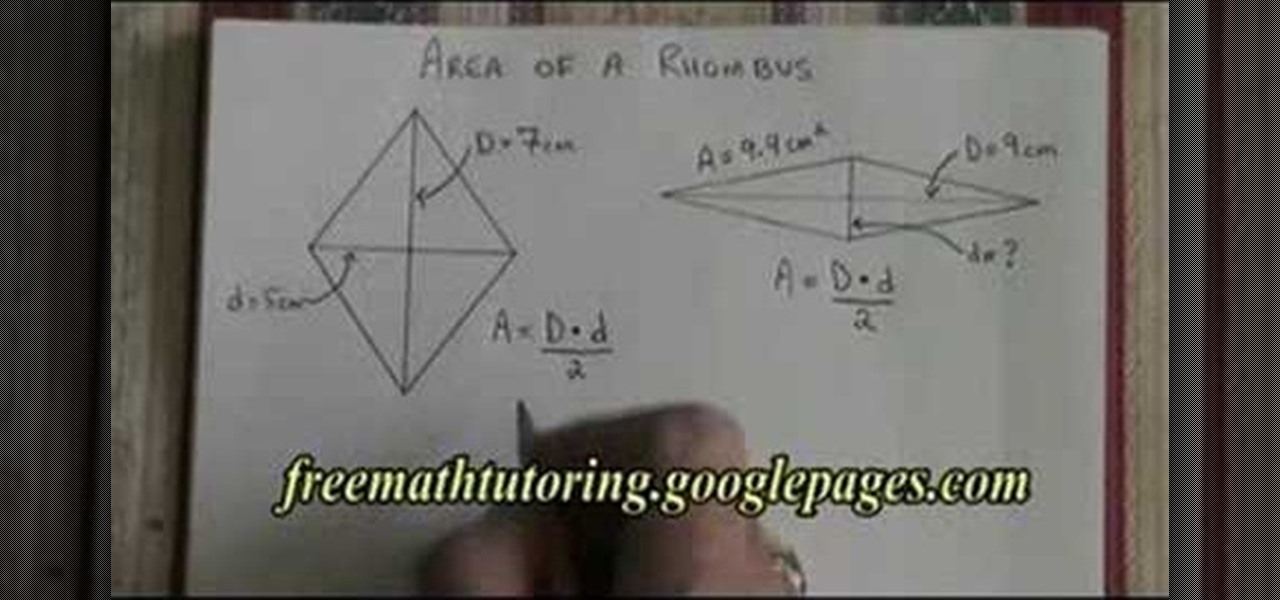
How To: Find the area of a rhombus
In this video the tutor shows how to calculate the area of a rhombus. He gives the formula for the area of a rhombus as area a = ( D * d ) / 2 where D is the length of the longer diagonal and d is the length of the shorter diagonal. He shows how to solve such problems by taking an example of rhombus with lengths of longer and shorted diagonal and computes its area by substituting the values in the area formula. This video shows how to compute the area of a rhombus when the lengths of its long...
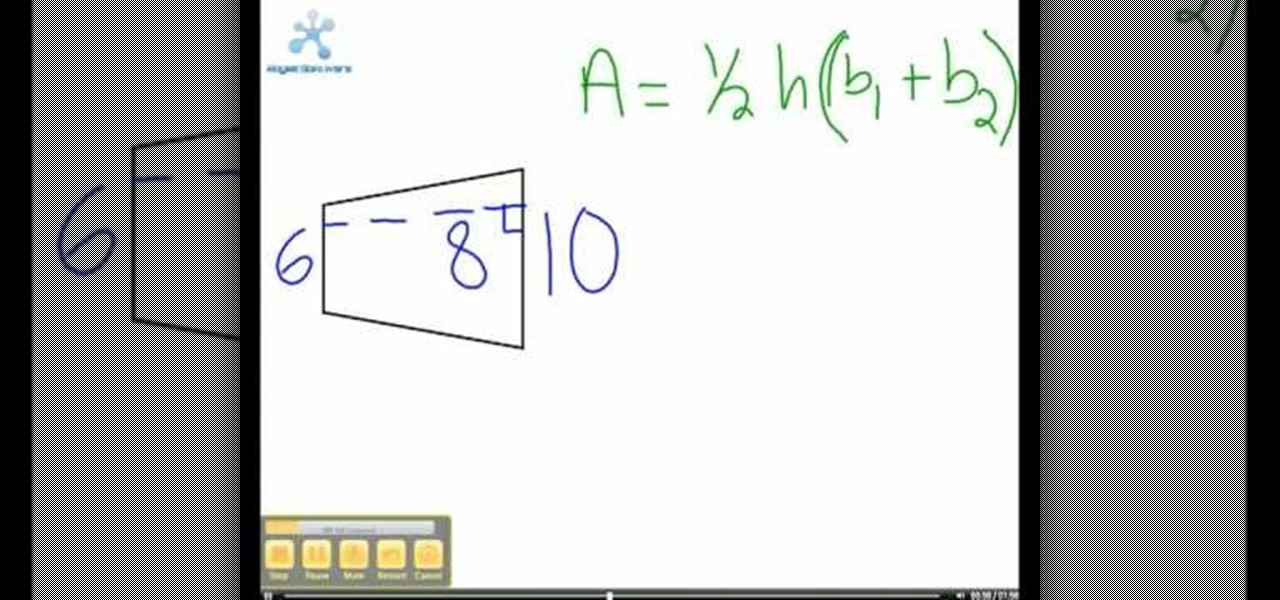
How To: Calculate the area of a trapezoid
Finding the area of a trapezoid is essential to high school and college mathematics. In this tutorial, learn how to find the area fast and easily. You will be aceing math tests in no time with this simple guide designed especially for students.
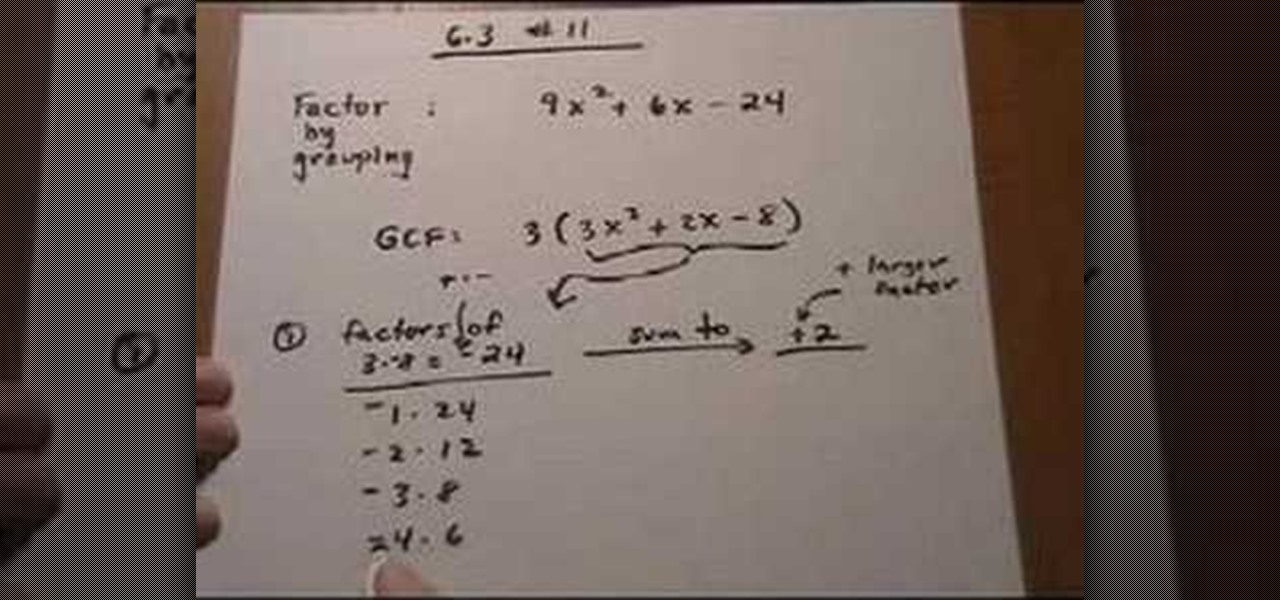
How To: Factor a trinomial, find the GCF, then group
This lesson describes the method to find the factors of a trinomial, which consists of three terms, by grouping. First of all, factor out the greatest common factor (GCF), and write the reduced trinomial in parentheses. Let the terms of the trinomial be written in order of exponent of the variable. For example, 3(3X2+2X-8) trinomial is written in the order of variable, with 3(GCF) factored out. Now identify the coefficient of the first and last terms, for example in this case, it is 3 and 8. ...
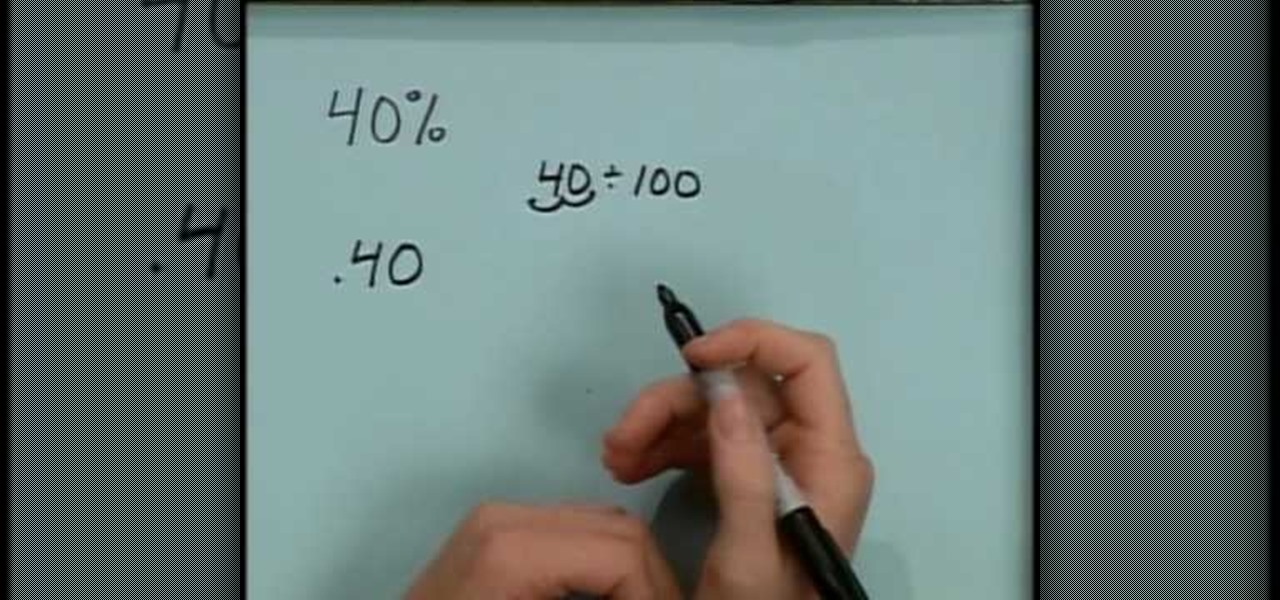
How To: Convert between fractions, decimals, and percents
In this tutorial the author explains of how to find out percentages of a given number. He explains that x percent of some number y is x multiplied by y and divided by 100. He goes on and explains this concept with numerous examples. He suggests a short cut to move the decimal point of a number two digits to the left to divide that number by 100. The author demonstrates many more similar tricks and short cuts using which one can easily solve percentage problems. So if you are looking for a goo...

How To: Solve one-step inequalities
The one step inequalities are one of the easiest method in mathematics that you can add or subtracting the values in an equation. Consider the equation M+7=-3(Assume M+7 as left side & -3 as right side), in this you should add -7 on both sides of the equation. In the next step on the left side +7 and -7 get cancel each other and in the right side -3 and -7 will become -10 (since minus multiplied with minus gives minus symbol by adding the values). In the next step value of M=-10, this can be ...

How To: Add fractions with uncommon denominators
This video shows you how to easily add two fractions with uncommon denominators. To add the two fractions you must translate the fractions into its higher equivalent form, with a common denominator. To find a common denominator, you must find the lowest multiple that both denominators can go into. You must multiply both the numerator and the denominator by a number, so that the denominator can go into the lowest common multiple you found earlier. Then, simply add the numerators and keep the s...

How To: Convert large numbers into scientific notation
Confused about scientific notation? In this informative video, Doug Simms from free math tutoring helps you work with large numbers more efficiently by converting them into scientific notation. Let this expert walk you through easy to understand marker board examples covering all of the basics of scientific notation, including exponents, decimals, and how to convert numbers back and forth between different notation forms. Don't let confusing science problems get you down when Doug Simms is ar...

How To: Find the area & perimeter of triangles & squares
When you are figuring the area of a square, you only need to know the height and width of the shape. Once you know the height and width, multiply them to get the area of the square. To find the perimeter of the square, add all four sides together. To find the area of a triangle, multiply together two of the sides (not the hypotenuse) and then multiply that figure by 1/2. To find the perimeter of the triangle, add all three sides together.

How To: Derive a point-slope equation from a graph
Do the words point-slope equation send your head into a spin? Well hold on tight, because the mathproblemgenerator.com has your cure? Here you can find a informative video about calculating slope, as well as finding points to substitute into the equation. After watching this video, you will be well prepared to produce a point-slope equation from any graph.

How To: Convert mixed numbers to improper fractions
The author in this tutorial shows how to convert mixed numbers into improper fractions. A mixed number has a big number to its left, a numerator for the fraction part and a denominator too for the fraction part. Now to convert the mixed number to improper fraction we first have to multiply the denominator with the big number and add numerator to it which results in a new numerator. Now the improper fraction is the new numerator divided by the previous denominator. The author explains this con...
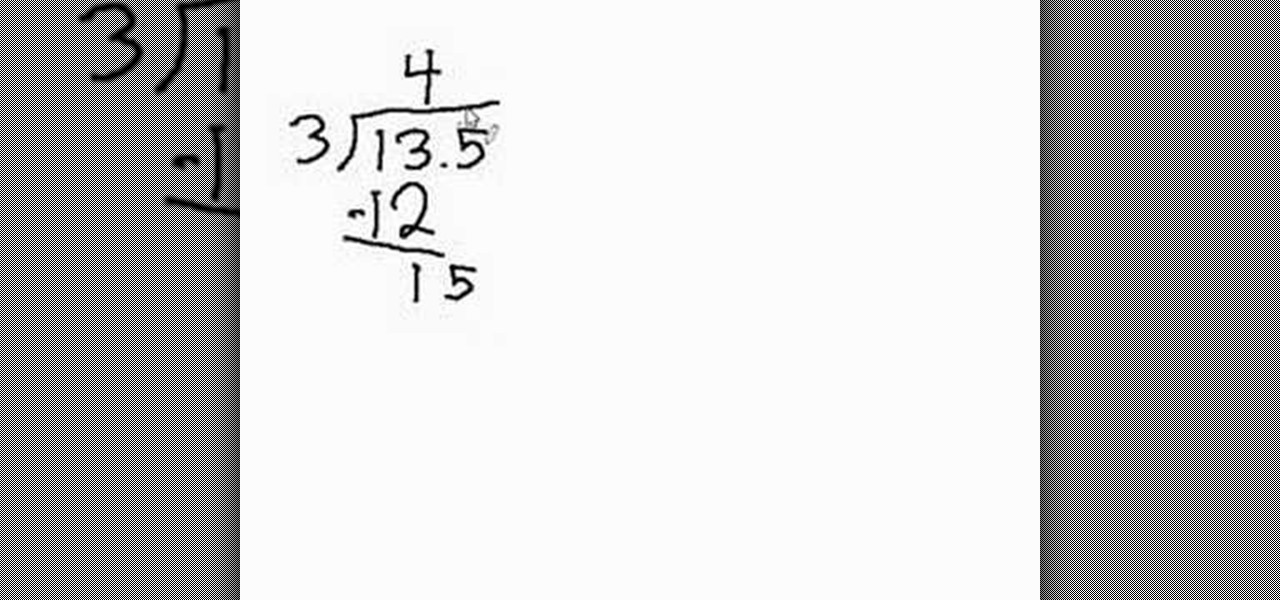
How To: Divide a decimal number by a whole number
How do you divide a decimal number by a whole number? It seems complicated but it really isn't when you get down to it. To divide a decimal number by a whole number you have to start off by dividing it as if it were any other number. Take for example 13.5 divided by three. If the number had been 135 instead of 13.5 the answer simply would've been 45 but as there is a decimal at work here, we will adjust the answer accordingly. Place the decimal in the middle to give the correct answer which i...

How To: Graph linear equations in algebra
Need to graph a line but aren't sure quite where to begin? It's simple once you understand the whys and wherefores of solving for Y. In this eight-part mathematical video series, instructor Kent Murdic will teach you everything you need to ace your next alegbra test.
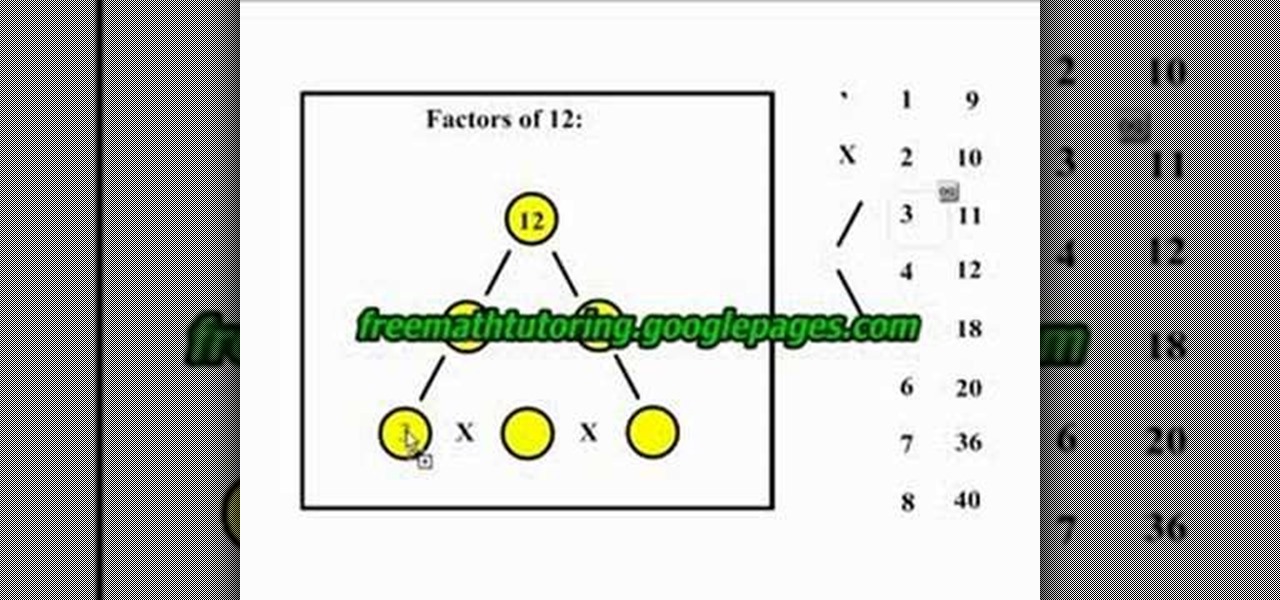
How To: Make a factor tree for the numbers 12 and 5
Making a factor tree is useful for us to see the factors of those numbers. Here we will take 12 and make a factor tree of it. Now we have to see those numbers with whom multiplication 12 comes. We will not take 1 and 12 here that is a obvious answer. We will take 3 and 4 there multiplication is 12. It will make the first branch of the tree now for the next branch we will take 3. 3 is a prime number 4 is not a prime number but multiplying 3*2*2 gives 12.

How To: Remember how to divide fractions with a song
In this video tutorial the author shows how to divide fractions by singing the songs "I Can Divide". He sings a wonderful and funny song about how he is petrified about fractions and in the song somewhere he says that to divide just invert and multiply. He says that division of fractions is nothing but multiplication of the first fraction with the inverse of the second fraction. He shows this trick in a funny manner by singing a song which is very catchy with humorous lyrics. This video conta...
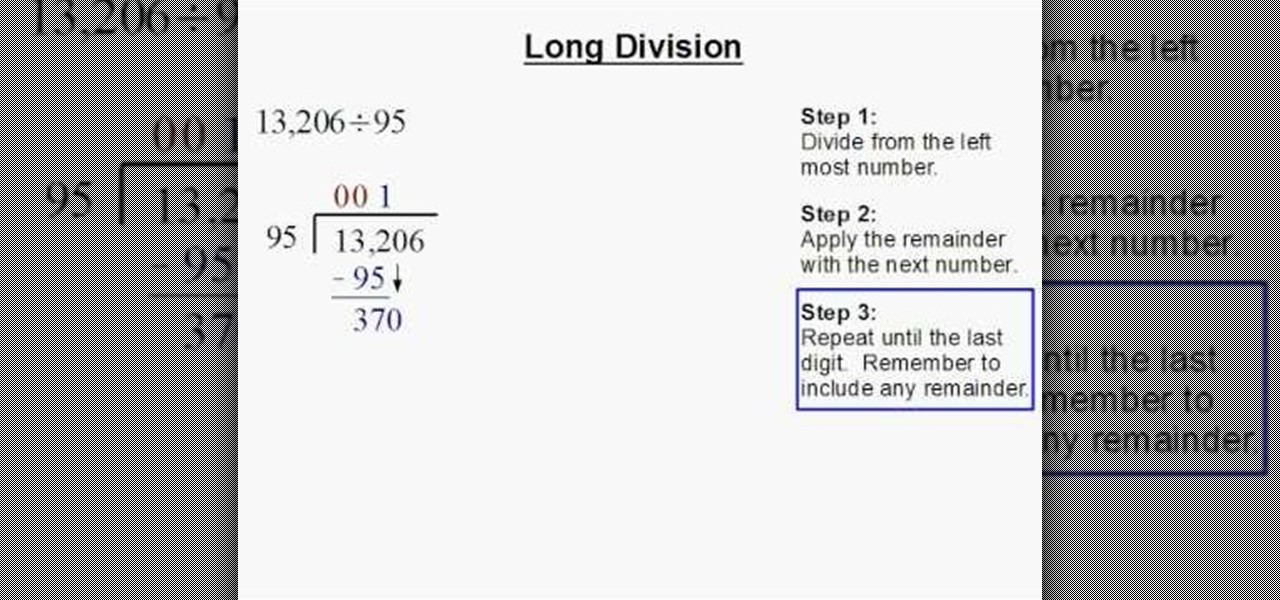
How To: Perform long division
Having trouble with long division?? This educational instruction video will teach you how to correctly perform long division. The easy to follow steps will teach you the right technique and you will be able to solve those pesky long division problems in a flash. So if you want to improve your math skills or you just want to learn how to perform long division, watch this easy to follow instructional video that will teach you the simple way of tackling long division problems.
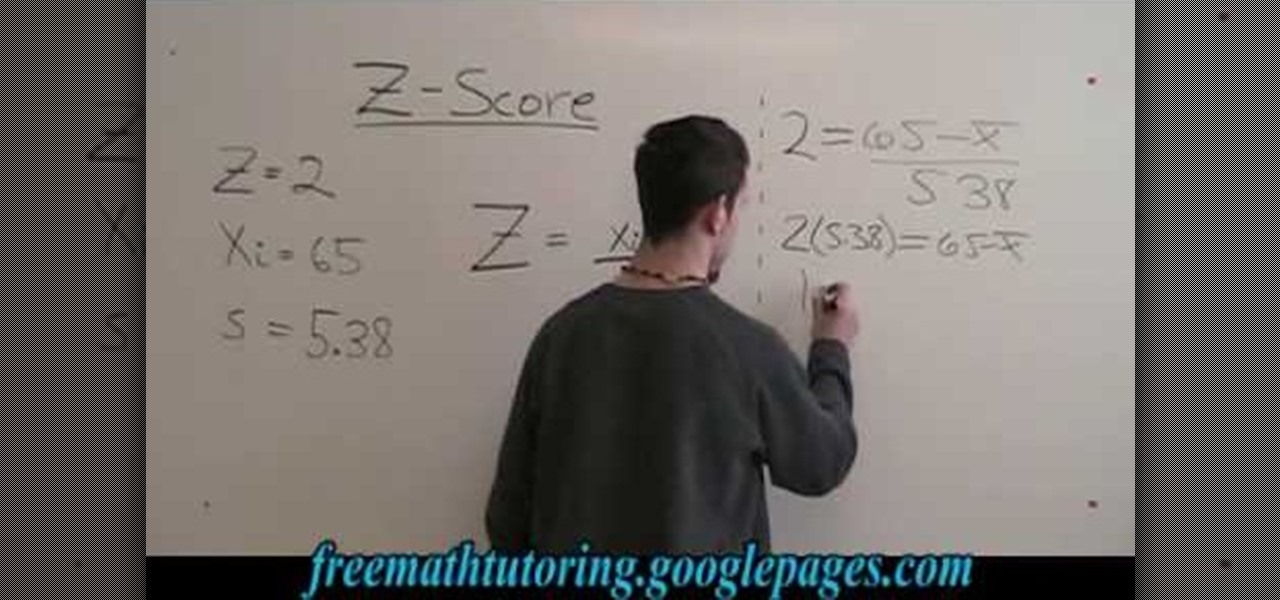
How To: Find X-bar with the Z-score formula
In this video tutorial it shows you how to find the x-bar by using the Z-score formula. In the beginning of this video the formula is displayed on the right, while the values that you need to plug in are on the left. Once you plug in the values and do the cross multiplying, all you have to do is get x-bar by itself on one side of the equation. This is a simple problem on using the z-score formula to find x-bar, it can help you solve more complex problems in the future.
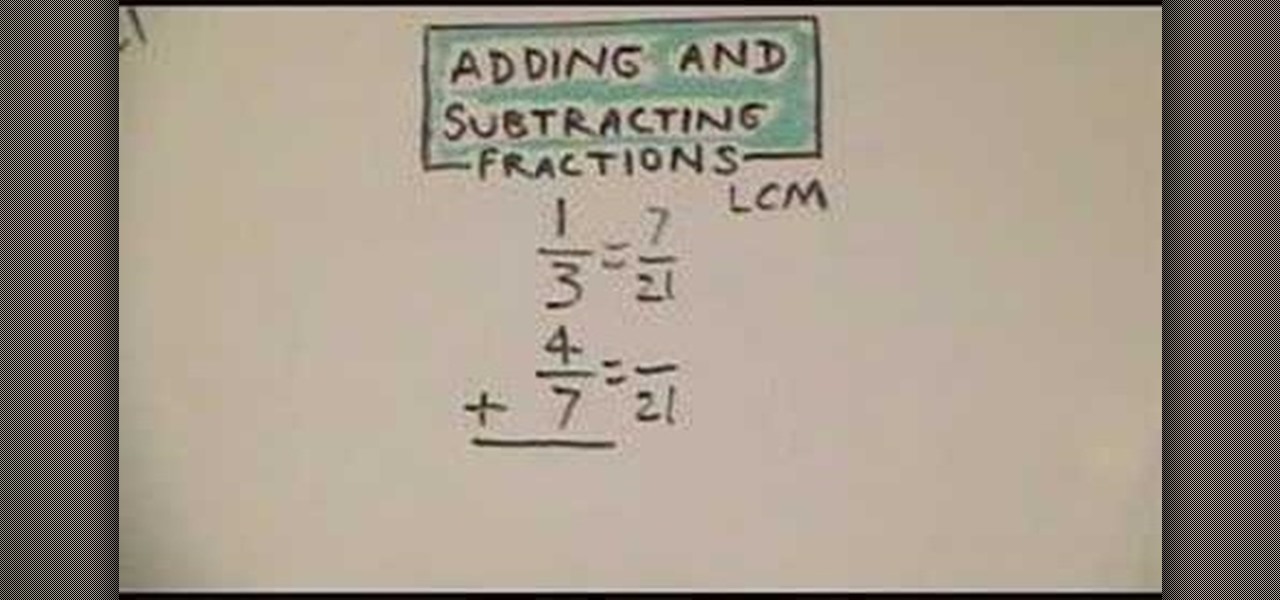
How To: Add & subtract fractions
This is a video that teaches how to add and subtract fractions. For fractions that have like denominators, you simply add the numerator and keep the denominator. Next, you reduce the fraction to its lowest term.

How To: Find the area of irregular shapes
This video explains how to find the area of irregular shapes. Draw the shape on a grid or graph paper. This will help you divide your shape into pieces. Draw dotted lines to divide the shape into squares, rectangles or triangles. For instance, if you have an "L" shape, you can divide the shape into two rectangles. Be sure your shapes do not overlap. Calculate the area of each individual shape. The graph paper will help you determine the length and width of each shape. Add the resulting areas ...

How To: Convert percents to fractions.
The video shows on a simple example how to convert a given percentage into a fraction. It requires basic knowledge about simplifying fractions. This how-to video does not feature spoken word or any kind of sound. The explanation is done with animated figures and explanatory written annotations. The ability to perform this conversion from a given percentage into a fraction can help putting a better imaginable picture to a percentage or make the solving of a mathematical calculation easier.

How To: Draw a rhombus from Geometry
In this video the author shows how to draw a rhombus when given with the values of long diagonal (D) and a short diagonal (d). Now he draws the long diagonal of size D horizontally on a sheet of paper. Now he points the mid point of the line as he explains that the diagonals of a rhombus meet at midpoints. So now he takes the ruler and draws an another line perpendicular to the first line through its marked mid point such that the length of the perpendicular line is d/2 both above and below t...

How To: Solve equations with variables on both sides
Confused in math class and need some extra help? This educational video gives instruction on how to solve mathematical algebraic equations. It shows you how to break an equation down and make them less scary to solve. Step-by-step instructions show you how to solve more complicate equations when there is a variable on both sides of the equation. An instructional video for students who need some extra help on their math homework, or parents who can't remember what they learned in high school.

How To: Divide basic fractions
For people who do not know how to divide basic fractions or who would like to refresh themselves or get some exercise in doing so, this video will show you a few quick and simple examples to get you started. In order to divide fractions, you will need to keep the first number the way it is and then take the second fraction which you are diving by and flip it upside down, so the numbers are reversed. You then multiply both the top and the bottom numbers together to get your final answer.

How To: Calculate acceleration in physics
So, you're speeding up.. on a skateboard, in a car, running.. and you want to calculate the rate at which you are traveling the faster you go? Check out this tutorial and learn a valuable physics lesson. This video will show you step by step how to calculate acceleration in physics and determine if an object is speeding up, slowing down or moving at a constant velocity. Acceleration is based on the direction of the object's velocity and acceleration vectors. That may seem like a mouthful, but...
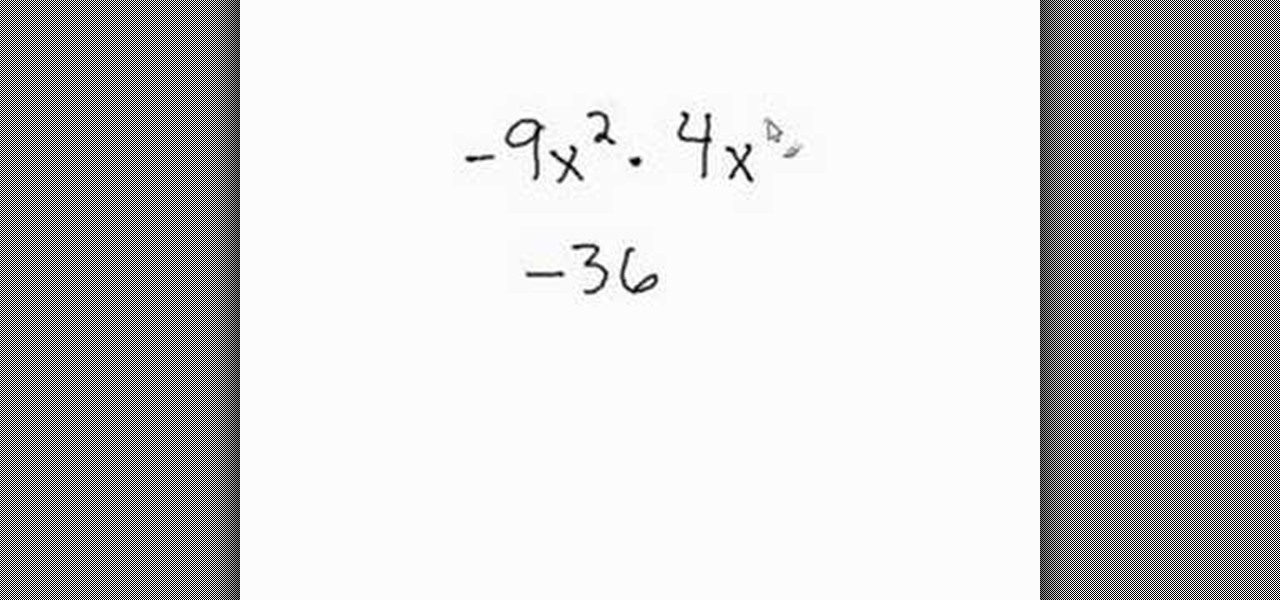
How To: Multiply variables
An educational video from Math Problem Generator that shows how to multiply variables. It is a very short video - about 1 min in length.
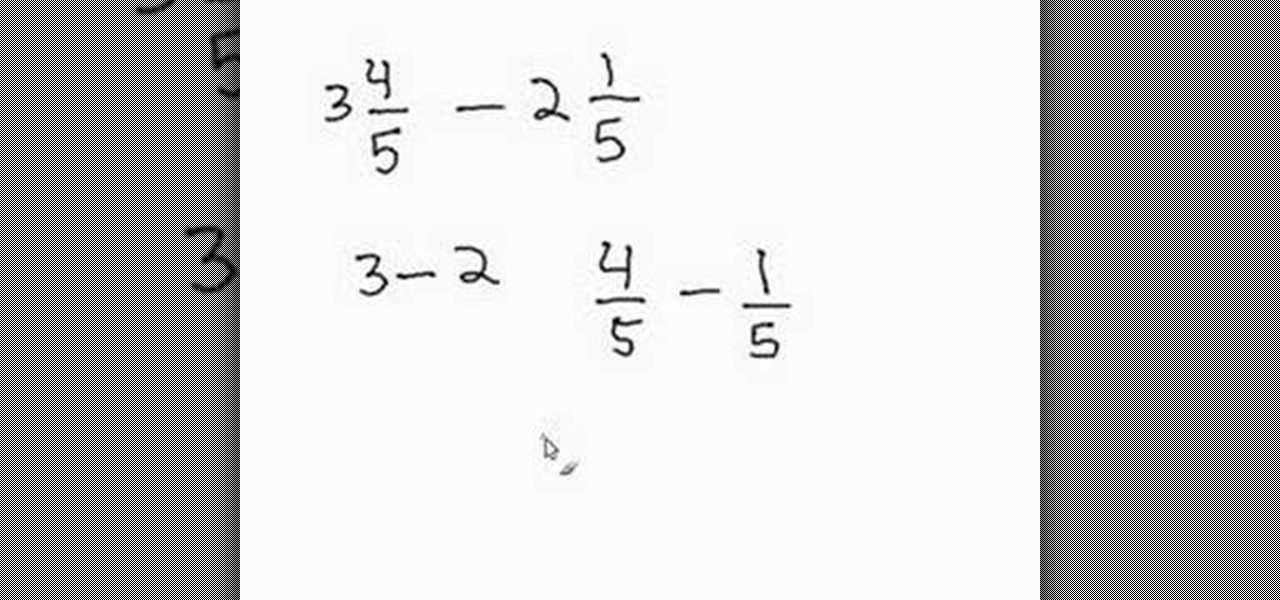
How To: Subtract mixed numbers with common demoninators
In this tutorial the instructor shows how to subtract mixed numbers with common denominators. He explains the method using an example. He does this by subtracting the whole numbers separately and also subtracts the fraction parts separately. Now he finally puts both those results side by side and if the obtained result is not further deductible, it gives us a new whole number which is our desired result. If you want to learn how to subtract mixed numbers with common denominators watch this tu...
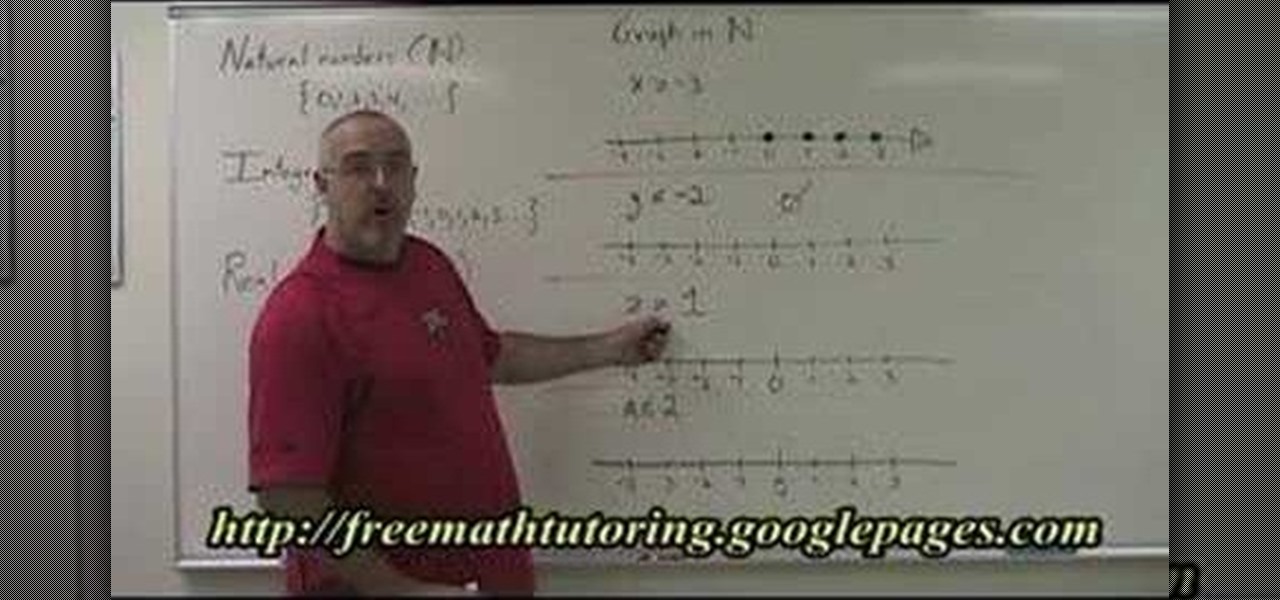
How To: Graph an inequality on a number line in Algebra
The video described here from [free math tutoring Freemathtutoring] teaches how to plot natural number on a number line in different situations. First, the author defines natural numbers, integers and real numbers. He then teaches different methods on how to plot natural numbers on a number line. The most important fact to remember is that natural numbers are greater than 0; they do not include negative numbers. Like wise, he explains different situations to plot natural numbers on a number l...
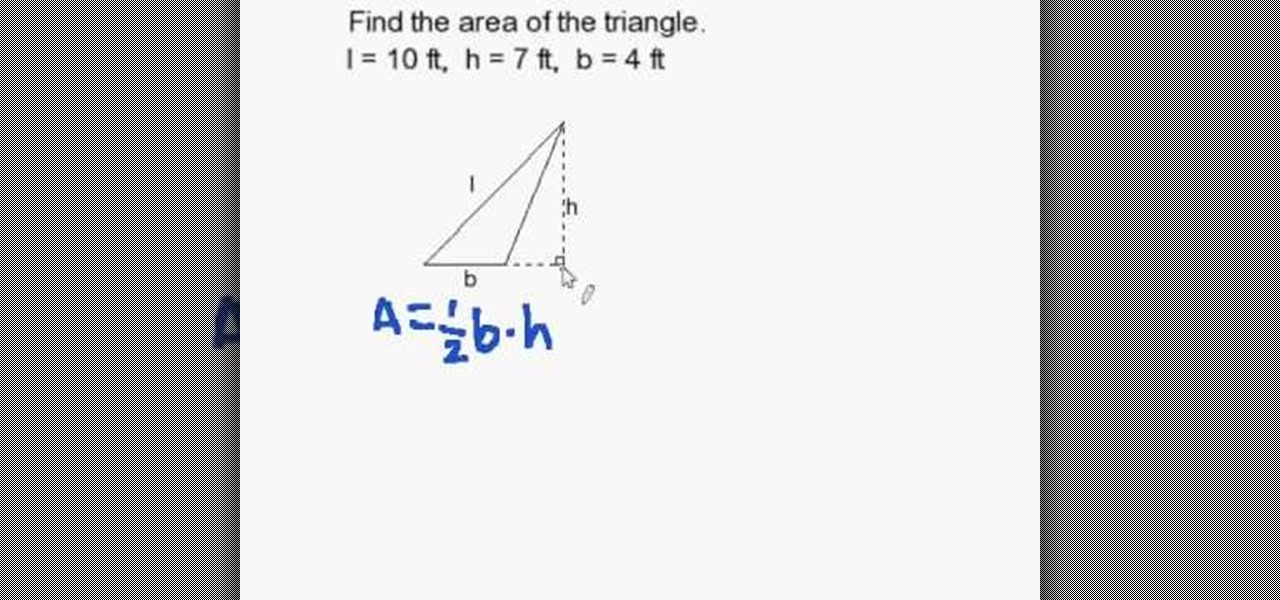
How To: Find the area of a triangle quickly and easily
Finding the area of a triangle is essential in mathematics. This video will show you how to ace that geometry test in a few simple steps. Not only will you learn how to find the area of a triangle in this video, you will learn to do so quickly and improve your test scores. Finding area is not difficult once you learn the basics.

How To: Use a formula to calculate the volume of a cube
Calculating the volume of a cube is very important in high school geometry classes. Calculating the volume of a solid can be confusing at first, but with a little practice you will be able to get it right. In this tutorial, high school math teacher Doug Simms teaches you exactly how to calculate the volume of a cube and offers examples so you can follow along. Listen to Mr. Simms and you will be at the top of your class!
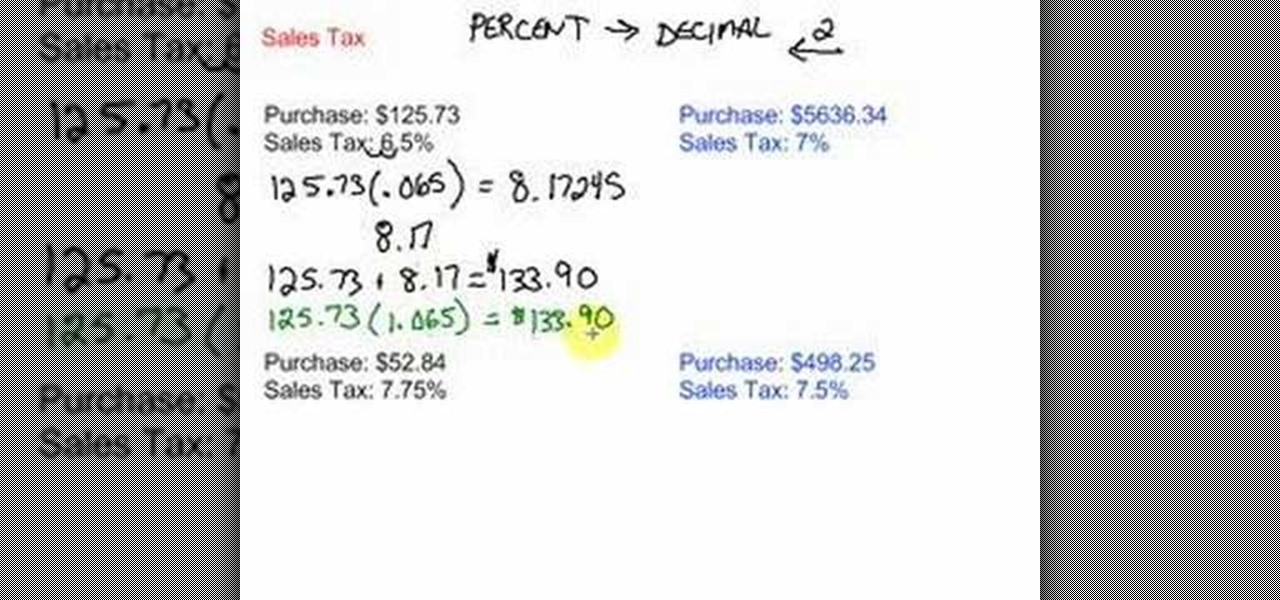
How To: Figure out and calculate sales tax
Video describing about how to calculate a sales tax price based on purchase price and sales tax percentage. There is one example which is described as below:
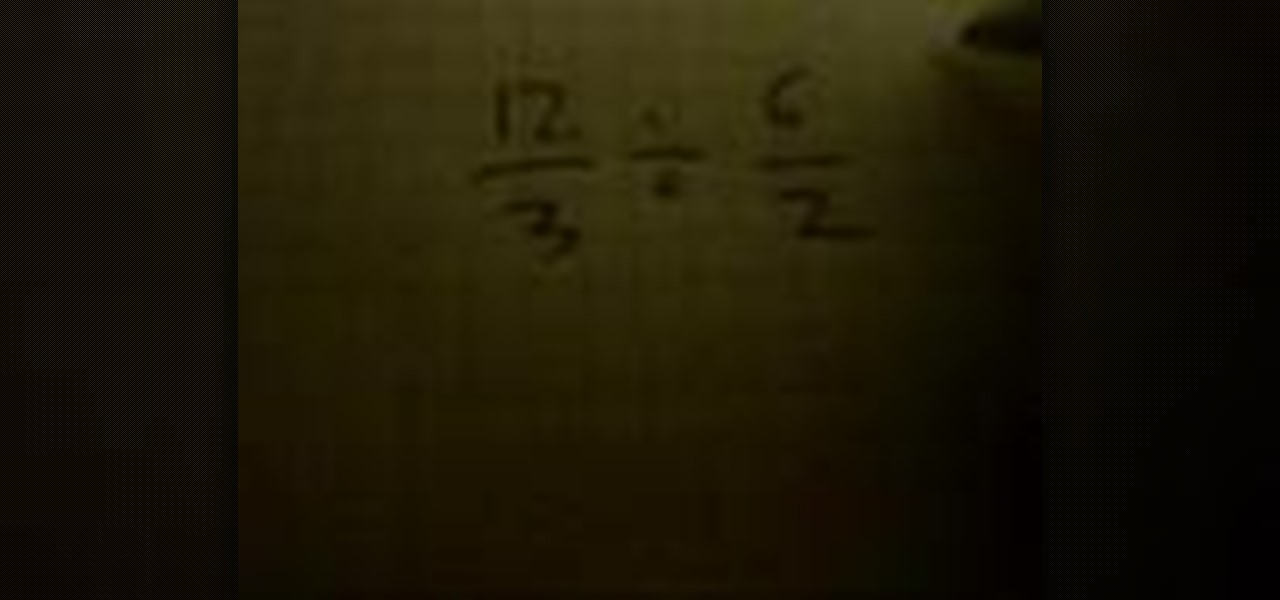
How To: Multiply and divide fractions in math
One can learn, from watching this video, how to multiply and divide fractions. Prof. Alexander gives a discourse on multiplication and division of fractions in a simple, easy way. For multiplication, one should first look for highest common factor in the numerator of one fraction and the denominator of the other, and vice versa, and if found, carry out the reduction by that factor. Then the numerator of one fraction is multiplied by that of the other fraction, the same operation is carried ou...

How To: Multiply rational expressions in two "easy" steps
In this Math Made Easy tutorial the instructor shows how to multiply rational equations. He states that multiplying rational equations is simply a process of simplifying equations, in which he says that first the polynomial equations should be factorized. He further shows how to factorize the equations by solving an example. After factorizing them he reduces the common terms on the numerator and the denominator and finally arrives at the new simplified equation. This video clearly shows the m...

How To: Find the surface area of a rectangular prism
Have a 3 dimensional figure that you can not figure out the surface area? This video teaches the fundamental concepts and techniques of figuring out the surface area of a 3 dimension figure. In this video, the specific shape will be a rectangular prism. The video will assist its viewers in understanding and learning the process of how to find the surface area of this 3 dimensional figure. The method is simple and easy to learn. This is highly recommended to anyone with an interest in math.
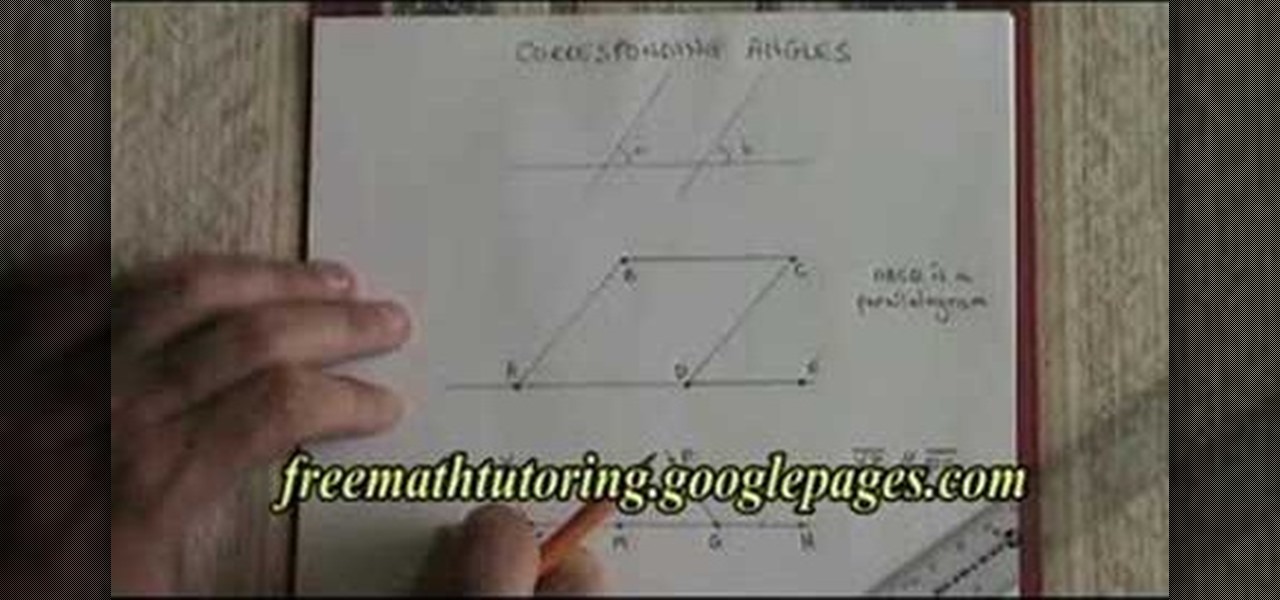
How To: Understand the Rule of Corresponding Angles
This video explains about the rule of corresponding angles. When measuring the angle between the parallel lines (i.e.) Line1 and Line2 across the straight line. The angle A and angle B are equal. The angle C and angle D are equal. The angle E and angle F are equal. Finally angle G is equal to angle F. So, the angle between the parallel lines in all the angles are equal. Hence, this is the rule of corresponding angles. This video is very useful to basic high school geometry courses. Correspond...




